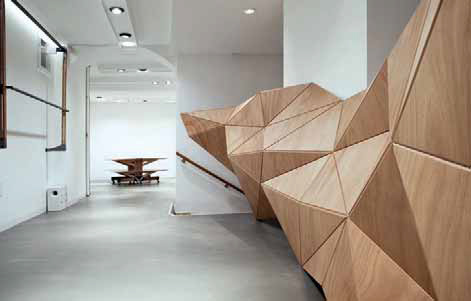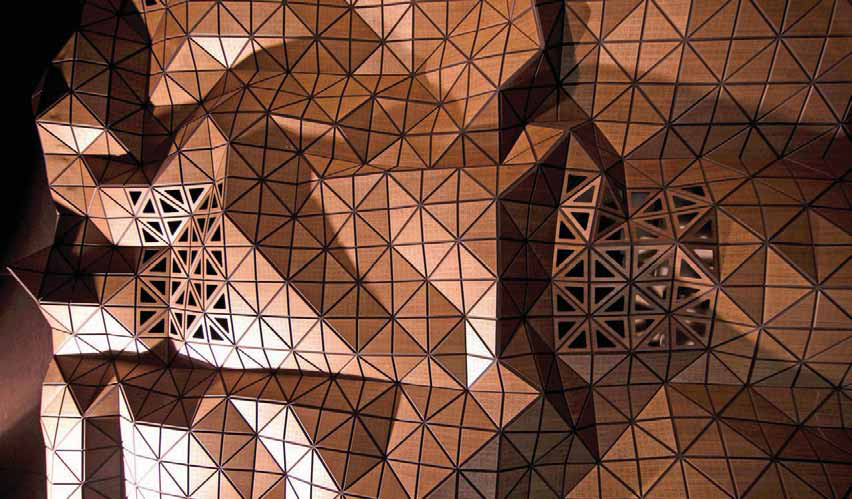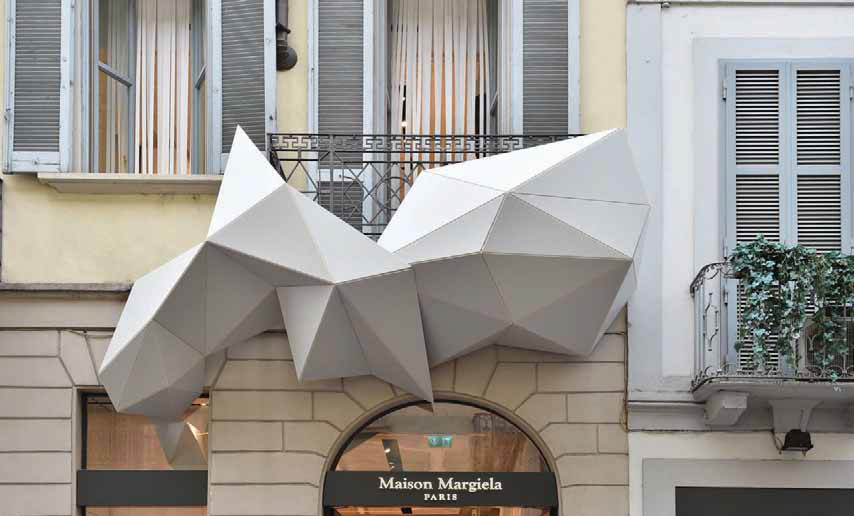Digital Design
3 May 2018Digital fabrication is enabling wood based panels to create complex shapes. Stephen Powney reports
Technology is fast moving and the digital world presents opportunities to make things we simply couldn’t produce before – such as self-assembling furniture and houses that build themselves.
This is the view of Milan-based Giulio Masotti, an architect who founded the unique Wood-Skin system.
Mr Masotti paints a vivid picture of his ’out of the box’ thinking, where wood and other materials could find new and visually stunning applications because of advances in CNC machining and software.
Enter the concept ’Industry 4.0’. It is gathering momentum among manufacturers and has the potential for big change.
“What does Industry 4.0 actually mean?” asked Mr Masotti. “It’s about communication. We have to speak to machines but most importantly it’s how machines speak to each other.”
Basically, this is enhanced data transfer and a level of self-awareness of machines. CNC processing technology and the latest software mean virtually any profile can be modelled and produced, leading to concepts like the self-assembling table.
This technology and 3D printers, argues Mr Masotti, are becoming the “new norm”.
“But it’s still all capable of so much more,” he said. “We can explore new frontiers. 3D printers can print very big structures that are very resilient without support. And the biggest area for virtual reality is not video games but production and machines.”
He said there was already a ’smart’ brick which could effectively self build, by having a tiny electronic motor to climb the structure.
“And it’s not just us talking to machines but us talking to the end product,” he said. Enter Wood-Skin, which Mr Masotti calls a disruptive digital fabrication product for Industry 4.0 and brings materials into the digital era. It is something similar, he said, to what is happening with 3D printing.
Using 3D sheets of material, mostly in wood based panel / composite products, Wood-Skin is able to form into some bizarre, wonderful and seemingly impossible self-supporting and complex 3D structures.
Mr Masotti describes the site assembly process of a Wood-Skin system as akin to a giant form of origami.
“It’s not enough to create a new technology. Digital fabrication can reinvent the way we build the world around us but, in order to do so, we also have to update materials,” he said.
In developing Wood-Skin, Mr Masotti created a new family of composites made of two rigid layers with a special textile in the middle. “With this simple action we embed unlimited hinges inside the material itself,” he said.
The rigid layers are usually timber materials including MDF, okoumé plywood, OSB and Finnish birch plywood, ranging in thickness from 4-30mm.
The Wood-Skin software developed is able to treat 3D shapes like origami, unfolding them and fitting them into production sheets.
This had not really been done before, said Mr Masotti, simply because materials were not able to act like paper – structures that were able to move and breathe.
The nature of the interlocking Wood-Skin structures means they can be produced in minutes, transported flat to ease logistics and assembled in seconds. Wooden flap joints are used to join Wood-Skin sheets together to form structures on site.
Concealed holes and other hardware anchors for fixing make installation quick and easy.
“This is going to be the future,” said Mr Masotti. “All the materials are going to be mixed and composite.”
The elements of the modular triangular pattern structures can vary in dimension, while the patterns, geometry and density can all be adapted in a customised system.
Standard dimensions of sheets are 2500x1250mm and 3050x1525mm but Wood- Skin can be used to create bigger surfaces for any scale of project, from small interior furniture to the façade of a skyscraper.
Exterior structures feature treated plywood supports, with laminate, veneer and varnish finishes available for these supports.
“We are currently working to develop new important applications in the service and contract industry, such as exterior applications and façades, which is a very big market we still haven’t really accessed,” Mr Masotti added.
The technology has also been used to create an acoustic product. Sound-Skin panels are perforated with holes to achieve high acoustic performances, while the CNC processing allows shaped holes to accommodate speakers, lights and other technologies.
Projects using Wood-Skin have included interior wall façades at Reign Restaurant, Dubai; a pair of tiled ‘curtains’ and exterior origami at the Milan store of fashion house Maison Margiela; Wood-Skin interior pillar structures at San Donato Town Hall near Milan; an application at LinkedIn’s headquarters in Madrid; sun-blocking ‘curtains’ at the Ibis Styles Hotel, Basel; and mesh sheets made of MDF and marked with a geometric pattern for a reception desk front in Montreal, Canada.
Wood-Skin was also a finalist in last year’s Architizer A+Awards, which feature the best of architecture and design worldwide. “This is solving the problem of complex shapes in architecture and giving us a whole new way to produce everyday objects,” said Mr Masotti.
It was, he added, helping architects around the world to bring their ideas to life.
As a further stage of development and evolution of the business model, Wood-Skin envisions a platform where people will be able not just to buy, but also to create objects in addition to existing ones. They could model and create anything, such as a bike rack or a dog house, through a Wood-Skin online platform, then buy the product – and potentially sell it through a personal shop on the platform.
“This model is similar to what is happening with 3D printing and diffused manufacturing but allows users to create bigger multimaterial objects,” said Mr Masotti.



